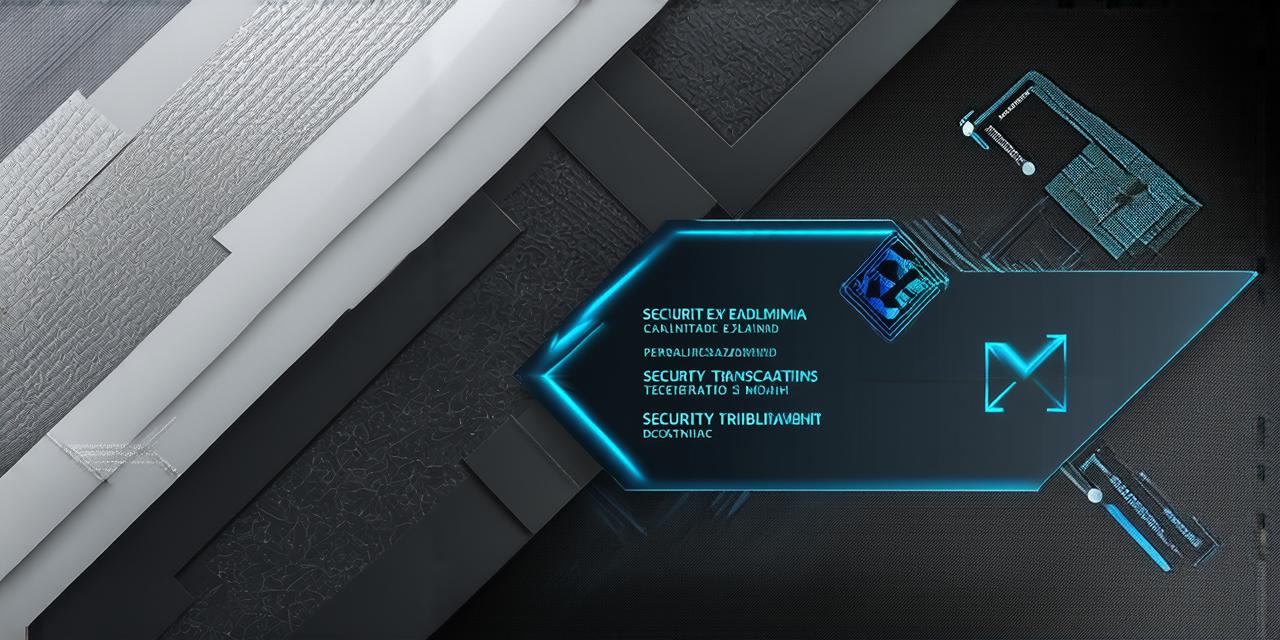Introduction:
Blockchain technology has been around for over a decade, and it has proven to be an innovative and secure way of storing data. However, as the adoption of blockchain technology grows, so does the trilemma that comes with it. The trilemma refers to the three main challenges faced by blockchain developers when building decentralized applications (DApps): scalability, interoperability, and governance. In this article, we will explore each of these challenges in detail and provide solutions on how to overcome them.
Scalability Challenge:
The scalability challenge refers to the inability of blockchain networks to handle an increasing number of transactions as the user base grows. This is a significant issue for DApps that require high throughput, such as decentralized exchanges (DEXs) and payment systems.
One solution to this problem is to use off-chain scaling solutions. These solutions allow for the processing of transactions outside of the blockchain network, which can significantly improve performance. One example of an off-chain scaling solution is the Lightning Network, which allows for instant and low-cost Bitcoin transactions.

Another solution is to implement sharding, which is a technique that divides the blockchain into smaller, more manageable pieces. This allows for faster transaction processing and reduces the load on the network. One example of a sharded blockchain is Ethereum’s Plasma Network.
Interoperability Challenge:
The interoperability challenge refers to the inability of different blockchain networks to communicate with each other. This can make it difficult for DApps to interact with multiple blockchains and can limit the potential of the technology.
One solution to this problem is to use standardized protocols, such as IPFS (InterPlanetary File System) and Cosmos, which allow different blockchain networks to communicate with each other. Another solution is to use interoperability tools, such as Chainlink and Kyber Network, which enable the integration of different blockchains into a single DApp.
Governance Challenge:
The governance challenge refers to the lack of clear decision-making processes for managing blockchain networks. This can lead to conflicts between stakeholders and can make it difficult to implement changes or improvements to the network.
One solution to this problem is to use a decentralized autonomous organization (DAO) to manage the blockchain network. A DAO is a self-governing entity that allows for the decision-making of its members through smart contracts. This provides a clear and transparent way to manage the network and can help prevent conflicts between stakeholders.
Another solution is to use a hybrid governance model, which combines centralized and decentralized decision-making processes. This allows for a balance between speed and flexibility in decision-making while maintaining transparency and accountability. One example of a blockchain that uses a hybrid governance model is Filecoin.
Conclusion:
In conclusion, the blockchain trilemma presents significant challenges for DApp development, but with the right solutions, these challenges can be overcome. By using off-chain scaling solutions, standardized protocols, interoperability tools, decentralized autonomous organizations, and hybrid governance models, blockchain developers can build scalable, interoperable, and governable DApps. As the adoption of blockchain technology continues to grow, it is crucial that we develop effective solutions to overcome these challenges and unlock the full potential of this innovative technology.
FAQs:
- What is the trilemma in blockchain technology?
The trilemma refers to the three main challenges faced by blockchain developers when building decentralized applications (DApps): scalability, interoperability, and governance. - How can the scalability challenge be solved?
One solution is to use off-chain scaling solutions, such as the Lightning Network, which allows for instant and low-cost transactions outside of the blockchain network. Another solution is to implement sharding, which divides the blockchain into smaller, more manageable pieces. - How can the interoperability challenge be solved?
One solution is to use standardized protocols, such as IPFS and Cosmos, which allow different blockchain networks to communicate with each other. Another solution is to use interoperability tools, such as Chainlink and Kyber Network, which enable the integration of different blockchains into a single DApp. - How can the governance challenge be solved?
One solution is to use a decentralized autonomous organization (DAO) to manage the blockchain network, providing a clear and transparent way to manage the network and prevent conflicts between stakeholders. Another solution is to use a hybrid governance model, which combines centralized and decentralized decision-making processes. - What are some examples of blockchains that use off-chain scaling solutions?
One example is the Lightning Network, which allows for instant and low-cost Bitcoin transactions outside of the blockchain network. - What are some examples of blockchains that use sharding?
One example is Ethereum’s Plasma Network, which allows for faster transaction processing and reduces the load on the network by dividing the blockchain into smaller, more manageable pieces.
